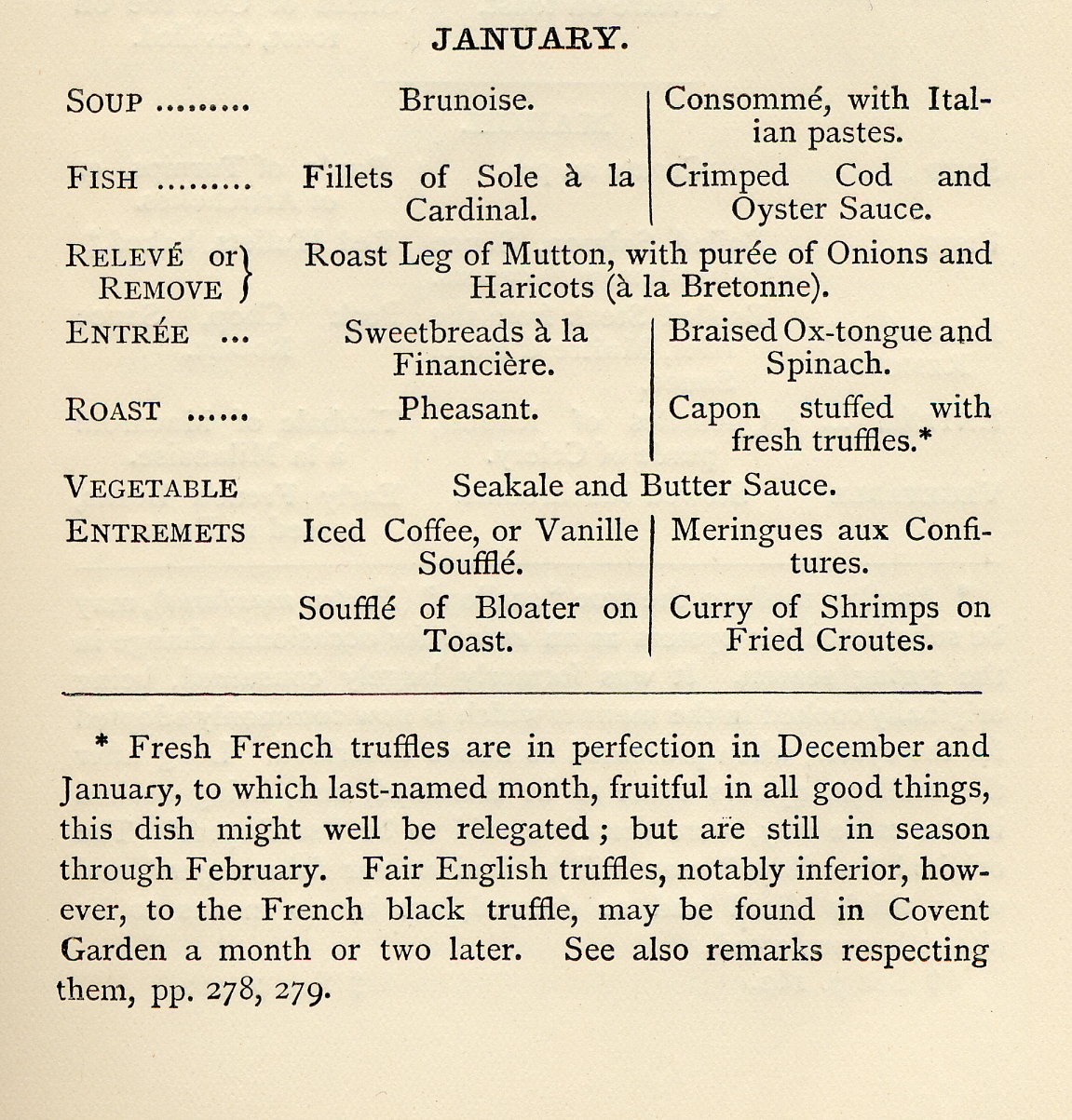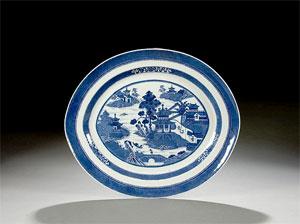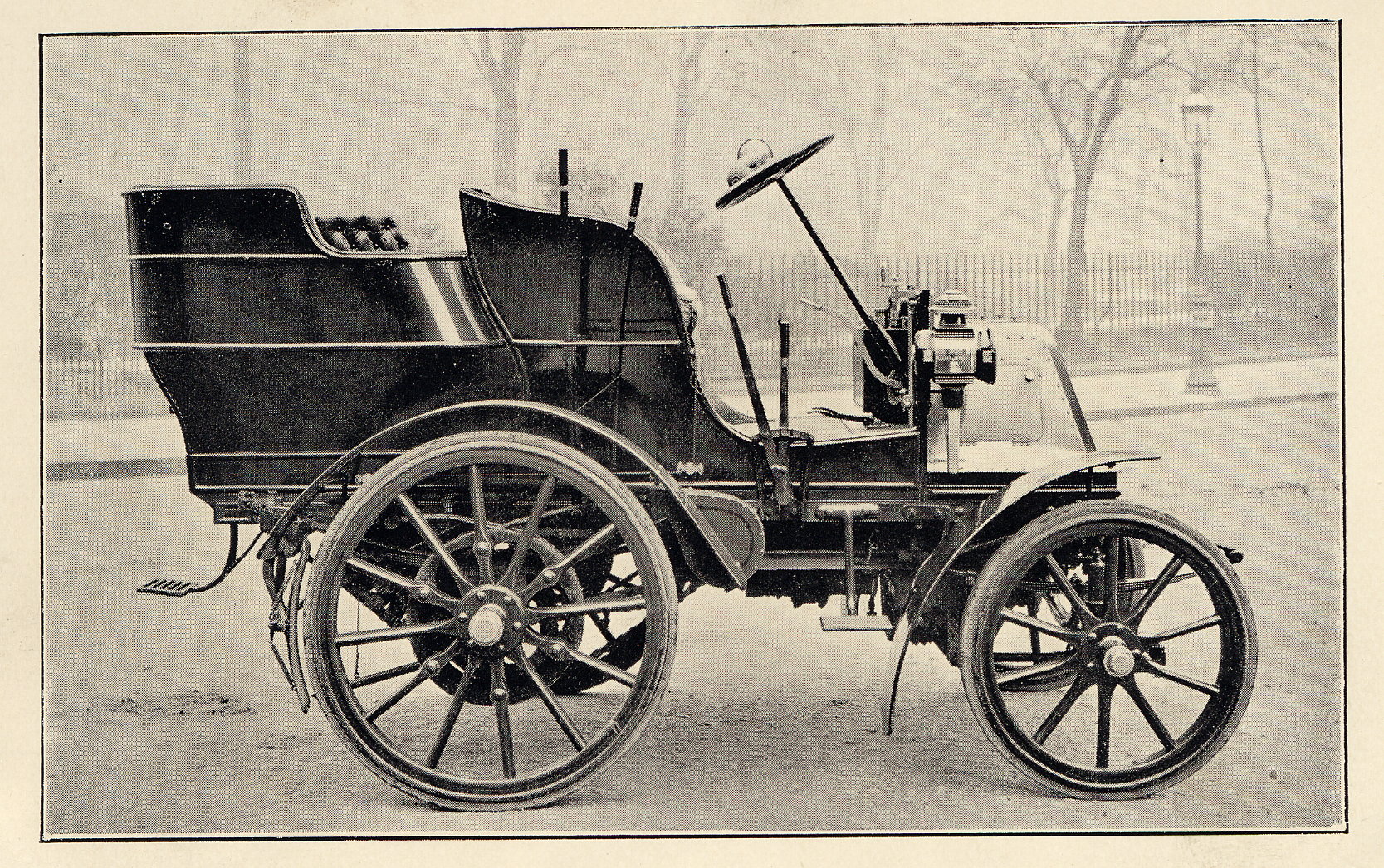Gourmet

In July 1845, the 25 year old Thompson took a holiday with a friend, Wingfield Stanford, to France and Belgium. At the Hôtel des Baines in Boulogne, he experienced his first French meal. His plate was changed eleven times and the meal lasted an hour and a half; it cost four francs. His taste for fine cuisine was born.
Due to his very successful surgical practice, Henry Thompson was much celebrated and part of the social scene of Victorian England. At his second house (35 Wimpole Street), he gave dinner parties attended by the most eminent men of the day. In 1872, finding the size of his popular parties too large to stimulate free-flowing conversation, he limited the number of diners to eight. Sat about a round table, the eight (always men), ate eight courses of a dinner that began at eight o’clock and these events soon became known as Octaves.
Thompson went to great efforts to make these occasions informal and to stimulate fresh conversational topics. He never invited the same eight to sit together twice. The guest lists of the Octaves, which Thompson meticulously recorded. included authors Charles Dickens, William Makepeace Thackeray, Rider Haggard and fellow doctor Arthur Conan Doyle. Artists were, of course, invited with Sir John Tenniel sitting at the same table as Sir Lawrence Alma-Tadema. Men of the church, the armed forces, the peerage and members of the Royal Family - both The Prince of Wales (later Edward VII) and Prince George (later George V) - sat with their host, ate fine food, drank fine wine and discussed whatever topic came to the fore.
Thompson wrote extensively on food and diet. He felt passionate about the relationship between a healthy diet and the health of the individual - indeed the health of the population as a whole. Not written purely from a medical point of view, Thompson's books are not dry lists of food-types or calorific values but descriptive feasts of the "do’s and don’ts" of healthy eating, illustrated with wonderful recipes and menus of the day (pictured).
Artist
Many Victorians painted and sketched for a hobby, but Thompson excelled making this more than a gentle pastime and reaching for the top of the artistic tree. Henry Thompson exhibited thirteen paintings at the Royal Academy of Arts. Thompson acted as doctor to Sir Lawrence Alma-Tadema, the Pre-Raphaelite artist. He travelled with groups of artists sketching and went to Switzerland in the company of the watercolourist David Hall McKewan and to Derwentwater in the Lake District with Alfred Elmore and Charles Landseer.
Collector
 As well as painting, Thompson was an admirer and collector of Nanking porcelain (example pictured, right). This interest began with the still life subject of one of his Royal Academy pictures (1872), a grey Japanese crackle jar. He collected so voraciously that he filled his study, requiring special cabinets to be commissioned to hold his growing collection. His collection was so impressive that he was encouraged, in 1879, to produce a catalogue of it for publication. This he did, painting six of the illustrations himself; the other twenty were drawn by another of his artist friends, James. When Thomson sold his collection in 1880, it realised the astonishing sum of £4,328 7s 6d (present-day equivalent: approximately £300,000).
As well as painting, Thompson was an admirer and collector of Nanking porcelain (example pictured, right). This interest began with the still life subject of one of his Royal Academy pictures (1872), a grey Japanese crackle jar. He collected so voraciously that he filled his study, requiring special cabinets to be commissioned to hold his growing collection. His collection was so impressive that he was encouraged, in 1879, to produce a catalogue of it for publication. This he did, painting six of the illustrations himself; the other twenty were drawn by another of his artist friends, James. When Thomson sold his collection in 1880, it realised the astonishing sum of £4,328 7s 6d (present-day equivalent: approximately £300,000).
Astronomer
For a time, Thompson became a devotee of astronomy, and maintained a private observatory in his house at Molesey. He did much to promote astronomical study in Great Britain by presenting Greenwich Observatory with some of the finest instruments among its equipment at that time.
Chicken breeder
At his house by the Thames, Thompson kept chickens. He put some effort into a breeding programme to develop bigger, meatier birds and was astonished and disappointed to find that, in England at the time, poultry was bred for show rather than for the table. He abandoned this pursuit.
Novelist
Many of his hobbies, as well as his medical work, led to the publication of books. However, in addition to these, he wrote two novels "Charley Kingston's Aunt" (1885) and "All But" (1886). They were both best-sellers, having several print runs.
Cremationist
Thompson revived interest in cremation from 1874 onwards after being stimulated by Italian experiments in 1872 and the demonstration of a practical crematorium at the Vienna Exhibition of 1873. In 1884, his book "Cremation: The Treatment of the Body After Death" was published. He believed that human cremation was "a necessary sanitary precaution against the propagation of disease among a population..." He founded the Cremation Society of England although it was not until 1884 that a British court ruled cremation a legal procedure. The British movement, founded by Thompson, prompted similar action in the United States, where the first crematorium was built in Washington, Pennsylvania, in 1876.
Read his book on cremation Cremation Society of England
Motorist
 By the age of 81, Thompson’s interest in new pursuits had not diminished. In 1901 he bought a motor car - a Daimler 6.5 HP (pictured). He wrote a series of letters to The Times in support of the new invention, defending it from its horse-riding detractors. He published these in his book, "The Motor Car. Its nature, use and management" (1902), along with an explanation of the "anatomy and physiology" of his car. His book also included useful travelling directions from London to various places around the country and contained tips on how to avoid speeding fines!
By the age of 81, Thompson’s interest in new pursuits had not diminished. In 1901 he bought a motor car - a Daimler 6.5 HP (pictured). He wrote a series of letters to The Times in support of the new invention, defending it from its horse-riding detractors. He published these in his book, "The Motor Car. Its nature, use and management" (1902), along with an explanation of the "anatomy and physiology" of his car. His book also included useful travelling directions from London to various places around the country and contained tips on how to avoid speeding fines!